Spatial Timber
Spatial Timber Assembly
Robotically Fabricated Reciprocal Frame Wall
Ziju Xian1, Nicholas Hoban2, Brady Peters3
1,2,3University of Toronto
[email protected] 2,3{nicholas.hoban|brady.peters}@daniels.utoronto. ca
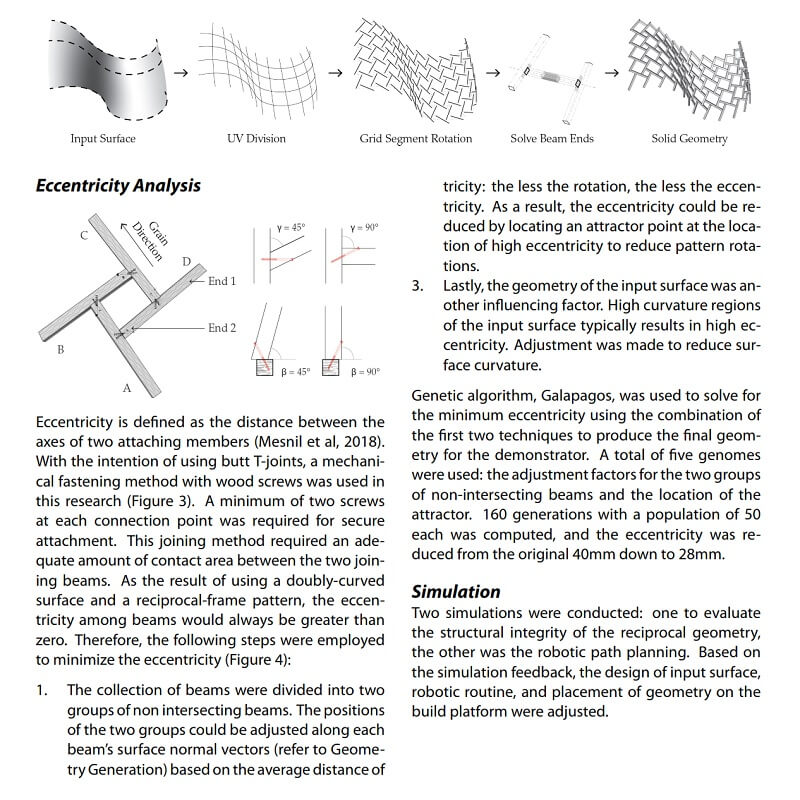
Though highly robust and economical, traditional lamella and reciprocal structural systems cannot adapt to surfaces with complex double curvature; as the timber members are standardized with no variation. Recent research has explored the use of computation for design, structural optimization, and use of robotic systems for the automated fabrication of timber joints.
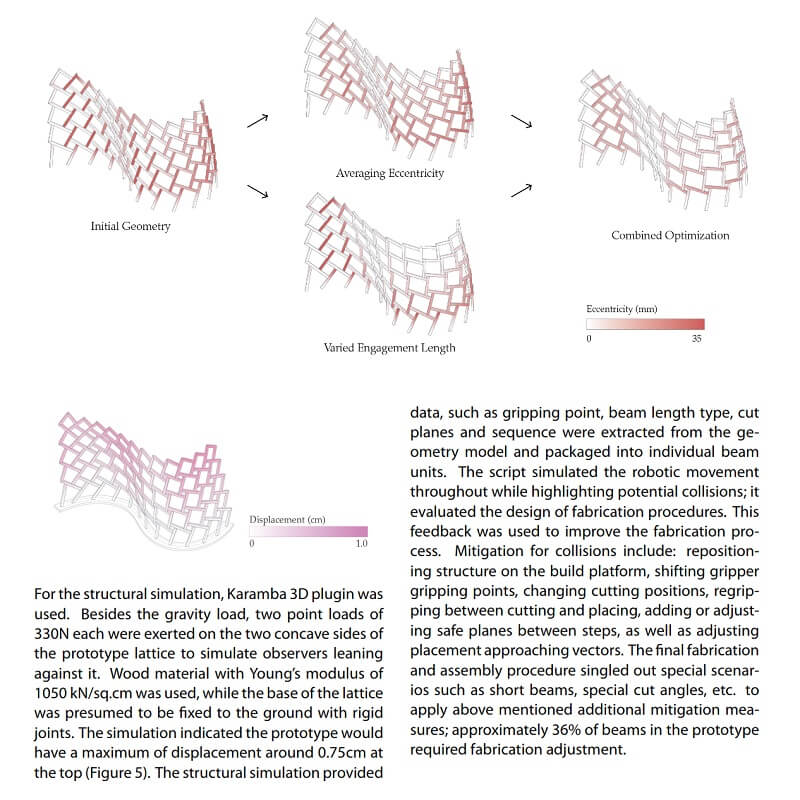 The disconnection between fabrication and assembly makes the construction of non-uniform double-curved reciprocal frames challenging, due to the required precise placement of discrete members with compound angle butt joints. This project investigates the use of robotic fabrication to cut and assemble a timber reciprocal frame assembly.
The disconnection between fabrication and assembly makes the construction of non-uniform double-curved reciprocal frames challenging, due to the required precise placement of discrete members with compound angle butt joints. This project investigates the use of robotic fabrication to cut and assemble a timber reciprocal frame assembly.
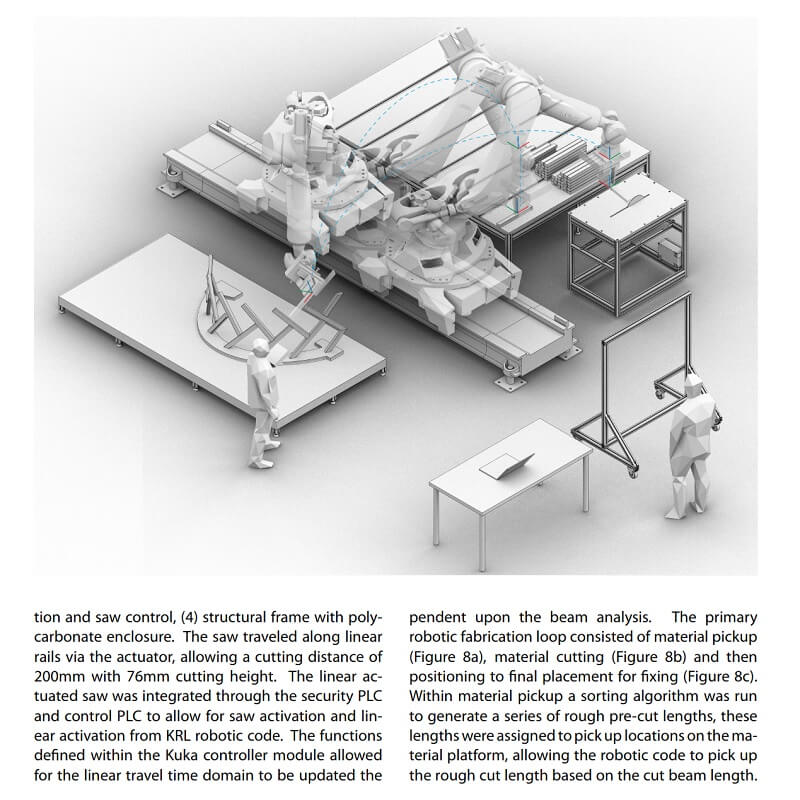 A computational model was created to generate the double-curved reciprocal frame geometry. Within this computational framework, joint analysis, fabrication, and assembly were monitored and adjusted to meet limiting factors. An industrial robot was implemented as a bridge between the computational model and the physical construction.
A computational model was created to generate the double-curved reciprocal frame geometry. Within this computational framework, joint analysis, fabrication, and assembly were monitored and adjusted to meet limiting factors. An industrial robot was implemented as a bridge between the computational model and the physical construction.
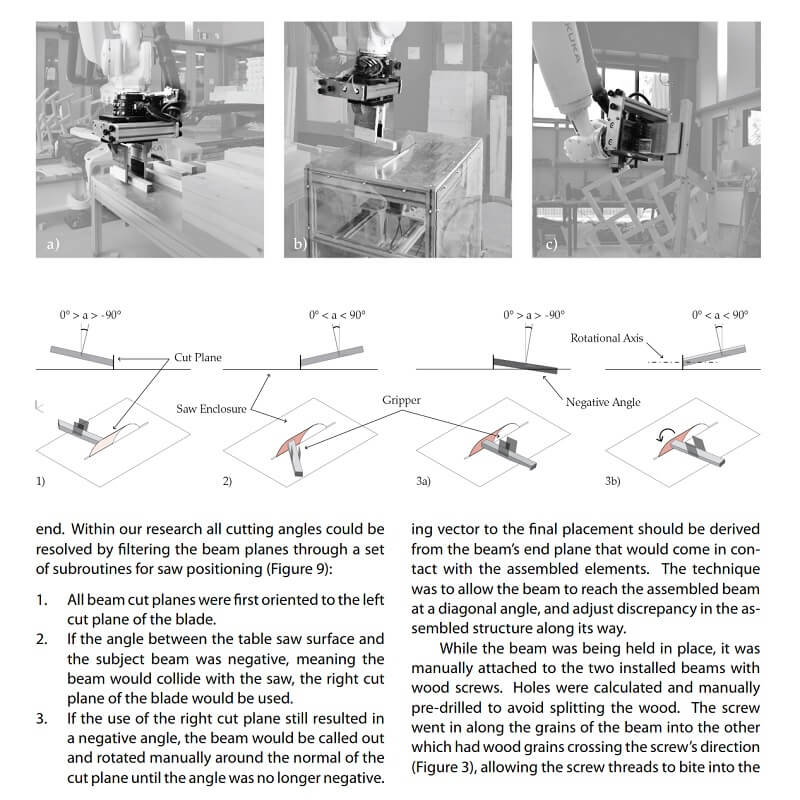 This paper by Ziju Xian, Nicholas Hoban and Brady Peters, presents a number of novel computational and robotic fabrication techniques in designing, cutting, and positioning. These techniques were explored through the robotic fabrication and assembly of a demonstrator – a double-curved reciprocal frame wall.
This paper by Ziju Xian, Nicholas Hoban and Brady Peters, presents a number of novel computational and robotic fabrication techniques in designing, cutting, and positioning. These techniques were explored through the robotic fabrication and assembly of a demonstrator – a double-curved reciprocal frame wall.
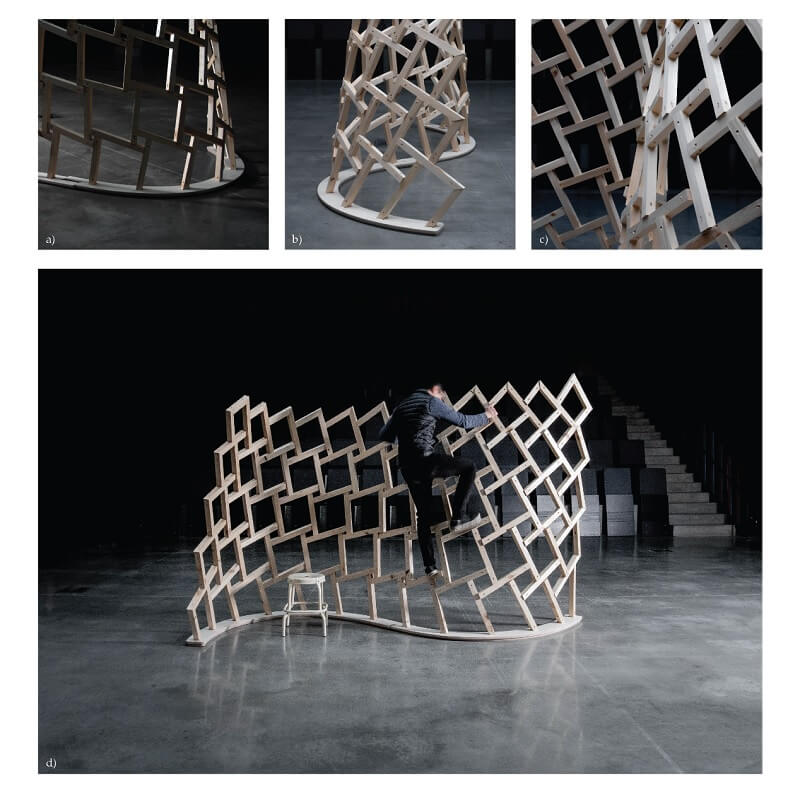



























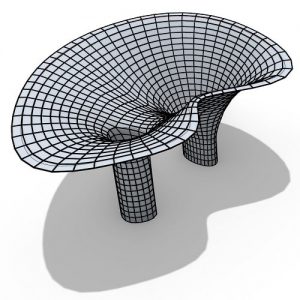
Comments